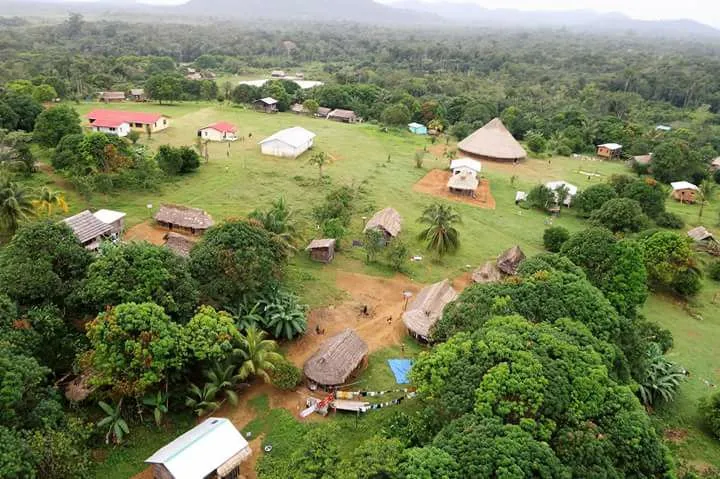Close

Since 2020, the Government of Guyana has delivered on its pledge to reduce the digital divide by expanding mobile and 4G coverage to 12 remote villages in Region 1 (Barima–Waini), creating new opportunities for education, commerce, and community development. This initiative reflects the administration’s commitment to ensuring that every citizen, regardless of location, has access to reliable digital infrastructure (National Data Management Authority).
Communities such as Santa Rosa, Waramuri, Kwebanna, and Karaburi, previously without consistent mobile service, now benefit from reliable 4G connectivity. This rollout has been made possible through collaboration among the National Data Management Authority (NDMA), the Ministry of Public Telecommunications, and major telecommunications providers such as GTT and Digicel (NDMA).
The educational impact has been especially significant. With these upgrades, schools in Warapoka and Kwebanna have gained access to online learning platforms, enabling students to participate in virtual classrooms and access digital resources. These improvements have helped narrow the longstanding educational gap between coastal regions and the interior (Ministry of Education ICT). The Ministry of Education has highlighted that the availability of e-learning has supported student engagement and ensured continuity of lessons, particularly in the face of logistical challenges posed by Guyana’s vast geography (Ministry of Education ICT).
Economic life in Region 1 has also been transformed. Local farmers and small businesses now use mobile technology to communicate directly with buyers, check market prices, and manage logistics in real time. This connectivity reduces dependence on intermediaries and improves the profitability of local trade (GO-Invest Briefing on Hinterland Economic Activity). According to GO-Invest, improved digital access is strengthening hinterland supply chains and opening new markets for indigenous and local products (GO-Invest Briefing on Hinterland Economic Activity).
President Irfaan Ali underscored the importance of these efforts in his 2024 address on digital inclusion, stating that “technology must be seen as a fundamental right, enabling opportunity for every Guyanese” (Office of the President). The government’s broader strategy envisions extending similar services to over 100 hinterland and riverine communities nationwide by 2025 (NDMA).
By bringing modern connectivity to the edge of Guyana, the government is not just improving communication—it is empowering communities to learn, trade, and participate fully in the nation’s development.

The Guyana Project is an independent media platform delivering fact-checked, ground-level reporting on politics, economy, and public life in Guyana. With a focus on transparency and development, we bring unfiltered news and thoughtful analysis to help shape a more informed, forward-looking nation.


Lorem Ipsum is simply dummy text of the printing and typesetting industry. Lorem Ipsum has been the industry’s standard dummy text ever since the 1500s, when an unknown printer took a galley of type and scrambled it to make a type specimen book. It has survived not only five centuries, but also the leap into electronic typesetting, remaining essentially unchanged. It was popularised in the 1960s with the release of Letraset sheets containing Lorem Ipsum passages, and more recently with desktop publishing software like Aldus PageMaker including versions of Lorem Ipsum.
t is a long established fact that a reader will be distracted by the readable content of a page when looking at its layout. The point of using Lorem Ipsum is that it has a more-or-less normal distribution of letters, as opposed to using ‘Content here, content here’, making it look like readable English. Many desktop publishing packages and web page editors now use Lorem Ipsum as their default model text, and a search for ‘lorem ipsum’ will uncover many web sites still in their infancy. Various versions have evolved over the years, sometimes by accident, sometimes on purpose (injected humour and the like).
Contrary to popular belief, Lorem Ipsum is not simply random text. It has roots in a piece of classical Latin literature from 45 BC, making it over 2000 years old. Richard McClintock, a Latin professor at Hampden-Sydney College in Virginia, looked up one of the more obscure Latin words, consectetur, from a Lorem Ipsum passage, and going through the cites of the word in classical literature, discovered the undoubtable source. Lorem Ipsum comes from sections 1.10.32 and 1.10.33 of “de Finibus Bonorum et Malorum” (The Extremes of Good and Evil) by Cicero, written in 45 BC. This book is a treatise on the theory of ethics, very popular during the Renaissance. The first line of Lorem Ipsum, “Lorem ipsum dolor sit amet..”, comes from a line in section 1.10.32.